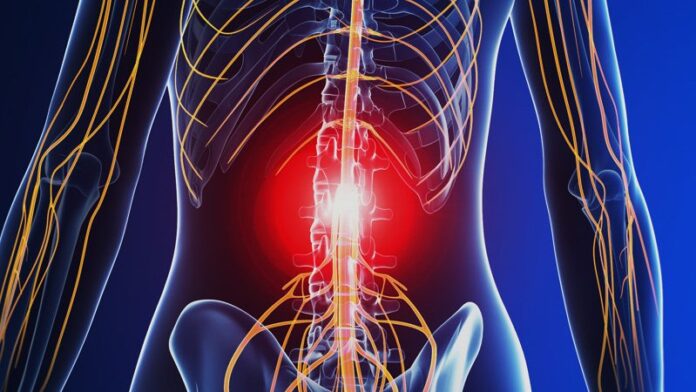[ad_1]

Aaron Phillips, PhD
A new device that targets electrical stimulation to the spinal cord can stabilize blood pressure in people with spinal cord injury, possibly preventing the debilitating episodes of orthostatic hypotension they regularly experience, a new study suggests.
“Everyone understands that spinal cord injury can lead to paralysis, but from working with spinal cord injury patients we have come to understand that what can be even more important to them than walking again is the effect the injury has on autonomic function, particularly the ability to stabilize blood pressure,” Aaron Phillips, PhD, colead author of the study, told Medscape Medical News.
“When we sit up from lying down our blood pressure regulates itself. But after spinal cord injury this autonomic function can be disrupted, meaning that a rapid reduction in blood pressure occurs, which can cause dizziness, cognitive problems, brain fog, and a loss of consciousness, making it difficult for people to change body position. Over time this blood pressure destabilization can also lead to cardiovascular events such as stroke and MI,” he explained.
Phillips, who is an assistant professor at the Hotchkiss Brain Institute, Cumming School of Medicine, University of Calgary, Alberta, Canada, added that restoring this autonomic function would have obvious benefits in the chronic phase of spinal injury, but it should also help in the acute phase when a drop in blood pressure can cause blood supply to the spinal cord to be compromised, which itself prevents healing.
Phillips and colleagues from the University of Calgary, the Swiss Federal Institute of Technology (EPFL), and University Hospital Lausanne (CHUV) have developed new technology designed to stabilize blood pressure by delivering electrical stimulation to the spinal cord. They are working with the company ONWARD, formed by EPFL researchers, to commercialize the technology.
The neuroprosthetic device was first developed to help restore walking function in patients paralyzed from a spinal injury, and has now been adapted to address the blood pressure instability issue.
Researchers describe their initial results with the technology in an article published online in Nature on January 27.
In the article, they report that the device stabilized blood pressure in rodents and nonhuman primates for extended periods after acute and chronic spinal cord injury. The device also restored normal hemodynamics in a human patient with a spinal cord injury and hemodynamic instability.
“This new technology is a cutting-edge neuroprosthetic which is designed to replace the baroreflex, which controls and stabilizes blood pressure and can be lost after spinal cord injury. We have effectively engineered a new baroreflex using a prosthetic implant,” Phillips commented.
“The system constantly reads the blood pressure in the body and creates a set point where blood pressure should be. It is implanted into the dural layer of the spinal cord over hemodynamic hotspots — the key regions that activate and control blood pressure — in the caudal area of the spine. A computational algorithm running in real-time monitors the blood pressure, and when pressure falls, it applies an appropriate level of stimulation to the hemodynamic hotspots, which then send messages to constrict blood vessels to raise blood pressure,” he explained.
In the one patient in whom it has been tested, Philips said the approach was “highly effective,” with blood pressure being stabilized and the need to use drugs to manage blood pressure eliminated. There was also a 90% improvement in quality of life. “These are truly remarkable preliminary results,” he said.
“I think we have a viable solution to this problem of loss of autonomic control,” he added. “This is a highly specific therapy to treat one of the major consequences of spinal injury.”
Philips estimates that blood pressure instability affects around half of patients with a spinal cord injury and is generally more severe with higher-level spinal cord injury.
Clinical trials are needed to evaluate the safety and therapeutic efficacy of the treatment in different stages of spinal cord injury, the authors note. The trials will be supported in part by a grant from the US Defense Advanced Research Project Agency (DARPA) for a 5-year project to develop neurotherapeutics that bridge the gap between the spinal cord and the brain after spinal cord injury.
“Unprecedented” Study
In an accompanying editorial, Patrice Guyenet, PhD, professor of pharmacology at the University of Virginia, Charlottesville, says: “This bench-to-bedside study is unprecedented in many ways, and, as such, raises several questions.”
For example, the sensory afferent neurons stimulated by the prosthetic device are unidentified and the long-term effects of their stimulation are unknown. In addition, it needs to be established whether the device will have adverse effects on gastrointestinal and kidney function, which are regulated by lower thoracic sympathetic neurons. Finally, an invasive procedure is required for the placement of an epidural electrode in the spine, and its long-term efficacy is unknown, he writes.
“Nonetheless, this latest attempt to treat the disabling hypotension that follows spinal cord injury is grounded in a large body of preclinical neuroscientific evidence,” Guyenet concludes. “It is the most sophisticated strategy developed so far. The approach could conceivably replace currently available treatments — although it is much too early to say this for sure.”
The study was supported by grants from Compute Canada, Natural Sciences and Engineering Research Council, Canadian Institutes of Health Research, Banting Fellowship, Alberta Innovates Health Solutions, Campus Alberta Neuroscience, Libin Cardiovascular Institute, Hotchkiss Brain Institute, PRAXIS, International Foundation for Research in Paraplegia, McCaig Institute for Bone and Joint Health, European Union’s Horizon 2020, RESTORE, OPTISTIM, Swiss National Science Foundation, European Research Council, and Bertarelli Foundation. Several of the authors hold various patents in relation to the present work, are Medtronic employees or employees/consultants/ shareholders of Motac Neuroscience, or shareholders of Onward, a company with potential relationships with the invention.
Nature. Published online January 27, 2021. Abstract, Editorial
For more Medscape Neurology news, join us on Facebook and Twitter.
[ad_2]
Source link












